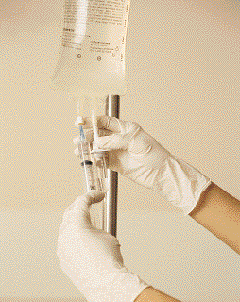Pharmacy Forecast 2016-2020
/The ASHP Foundation released a "Pharmacy Forecast: 2016-2020" Strategic Planning Advice back in December. My first thought is a pause thinking how long I have been out of pharmacy school. I start counting on my fingers from '99 and think, wait, what? SEVENTEEN years. I am officially the pharmacist I stood beside in one of my first pharmacy jobs. I considered him wiser. Maybe I am wiser, but I still sometimes feel like school was not too terribly long ago.
This is the fourth edition of this particular report, and I generally try to read every edition. This one somehow slipped by until this past week when I found it and read it rather quickly. There are some applicable topics for today's healthcare pharmacist that I want to dive into.
Strategic Planning versus Reactive Planning
I have not seen a lot of strategic planning within the hospital pharmacy model. We do a lot of reactive planning based on other departments mostly in line with cost management and saving money. We plan operations in how we staff our departments based solely on how many patients are in the hospital but do not use other metrics such how complicated medically is the patient? What if the patient comes in with a chronic infection versus the patient who comes in as a first-time infection? What if the patient has 20 or more home medications on board? Census is more than just number of patients. What if it is measured by a formula of disease states both acute and chronic along with number of hospital admissions in the past 5 years plus number of medications? A patient doesn't equal a patient. Maybe this applies in a surgical patient, but not in a patient with COPD, ARDS and decompensating on a ventilator due to a hospital-acquired infection.
Opening the report is a timely introduction:
"Since the start of the pay-for-performance movement1 and passage of the Patient Protection and Affordable Care Act (ACA), there has been intense pressure on healthcare organizations to improve quality while reducing costs. The stress created by this pressure has been exacerbated by proliferation of expensive specialty medications, egregious price increases for some sole-source drug products, and the escalation of generic drug prices. In response to this environment, many healthcare organizations are pursuing mergers and acquisitions in an attempt to create economies of scale without the cost of new construction. Another tactic is to partner with outside entities such as chain pharmacies."
Specifically what caught my eye this time was the section on work force. Change in practice models claim a shift from inpatient to ambulatory type practice.
"THE SHIFT TO AMBULATORY CARE As healthcare organizations respond to payment reforms that aim to lower costs and improve patient outcomes, health-system pharmacy practice leaders are challenged to optimize the role of the pharmacy work force in new models of care. One area of challenge is the shift in emphasis from inpatient to ambulatory care.1 Reflecting this change, three-fourths of Forecast Panelists (FPs) agreed that over the next five years, in at least 25% of health systems, patient care pharmacists will have umbrella responsibilities for both inpatients and outpatients (survey item 1). Further, 69% agreed that at least 25% of health systems will reallocate 10% or more of inpatient pharmacy positions to ambulatory-care positions (item 2). Consistent with anticipated growth in ambulatory care, 65% of FPs predicted a vacancy rate of greater than 10% for ambulatory-care pharmacy leadership positions over the next five years (item 5). Pharmacy staff development programs should ensure that there are adequate opportunities for education and training in management of ambulatory care pharmacy practice, transitions of care, and medication management of chronic illnesses. "
How do we lose money? Readmissions, using more inpatient days than necessary due to reasons in and out of our control, and not following certain standards that are attached to payment or removed when standards are not met while in-patient.
Did you notice one thing? The salaries of newly hired entry-level pharmacists will decline by 10% while pharmacist technician salaries will increase?
You know I get excited about this one:
"PHARMACISTS AS PROVIDERS Nearly 80% of FPs predicted that at least 25% of health systems will have a formal plan for including pharmacists, along with nurse practitioners and physicians assistants, in advanced roles that allow primary-care physicians to care for more patients (item 4). Supporting the high level of agreement with this statement is the shortage of primary-care physicians, proposed federal legislation to grant provider status to pharmacists, and the large number of states that authorize pharmacists to establish collaborative practice agreements with physicians. 2 Recent changes in reimbursement rules related to complex chronic care and transitional care management3 support the addition of pharmacists to primary-care teams. Many health systems will be establishing a privileging process for pharmacists to ensure that those with expanded patient care roles have the necessary competence for those roles."
I suggest you read through the report. It is mostly put together through surveys, but has some very timely information for the next 4-5 years in pharmacy.







 If you happen to run short of the lorazepam 2 mg/mL vials to compound your ativan drips, be mindful of the possibility of precipitation when using the lorazepam 4 mg/mL vials. AHFS Drug Info states:
If you happen to run short of the lorazepam 2 mg/mL vials to compound your ativan drips, be mindful of the possibility of precipitation when using the lorazepam 4 mg/mL vials. AHFS Drug Info states: